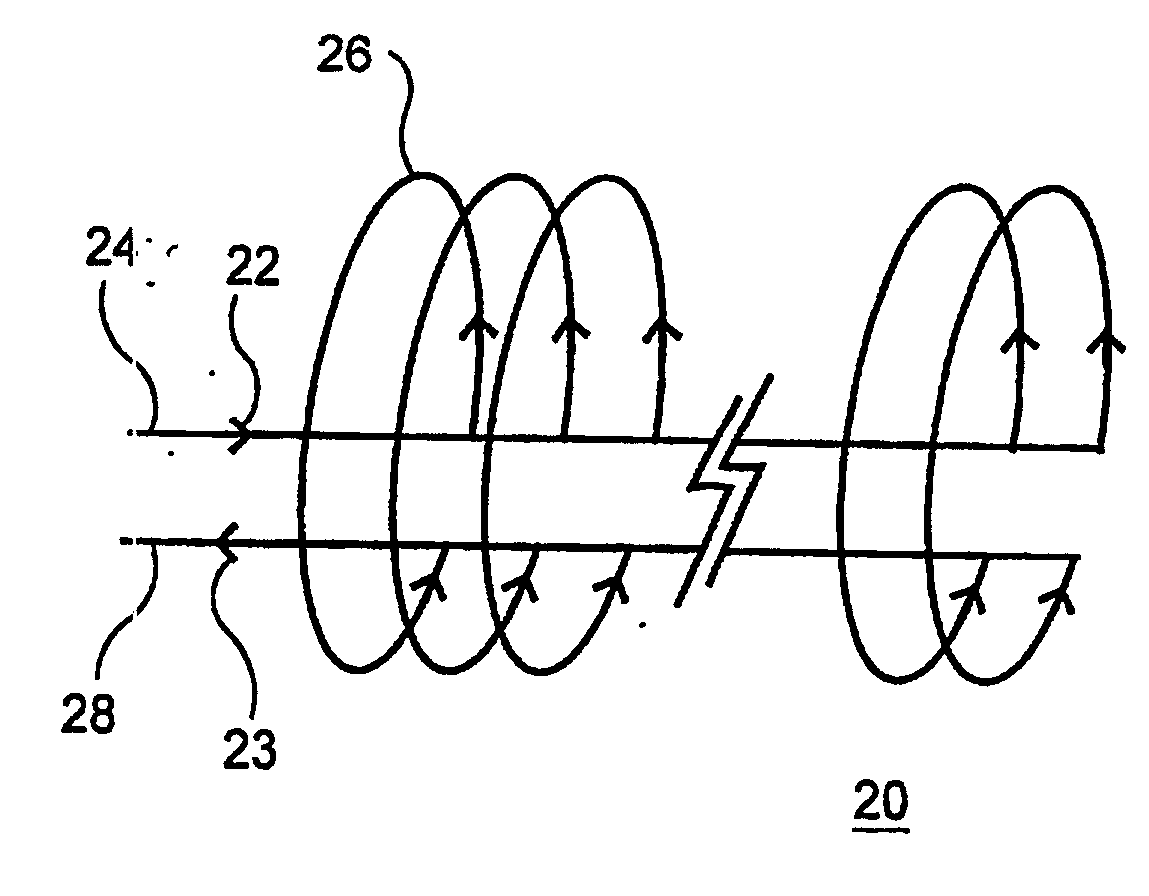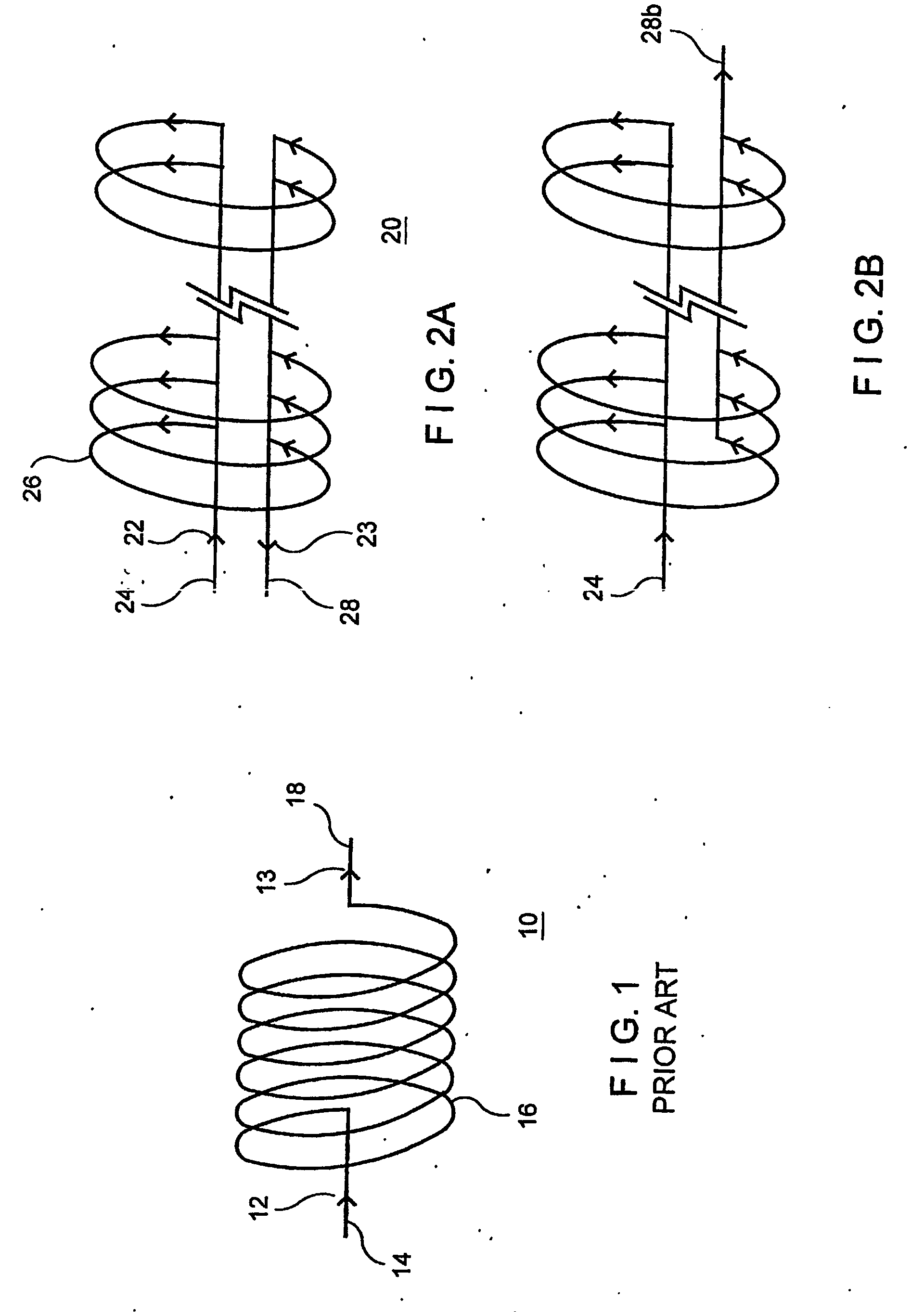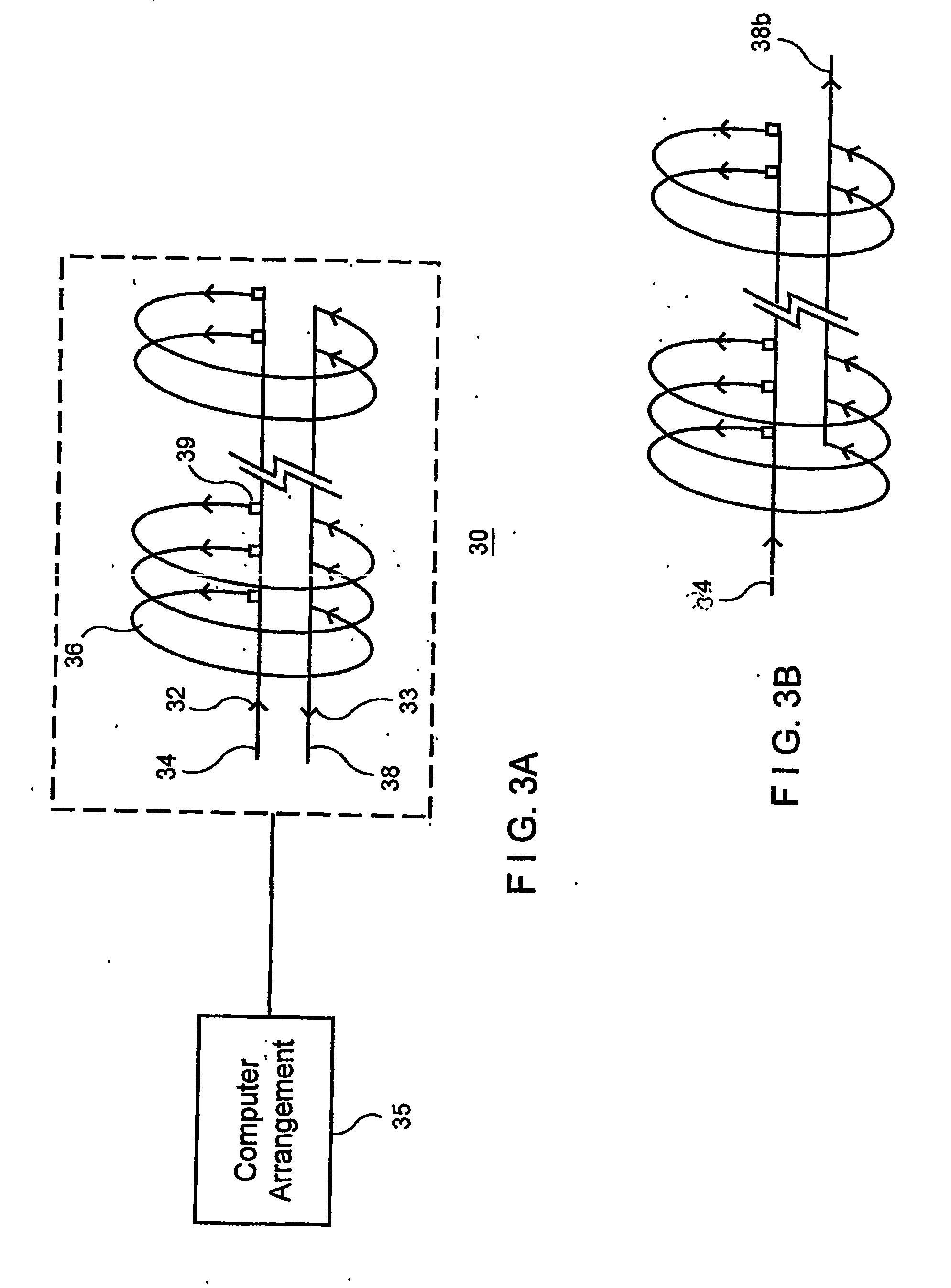[0010] One of the objects of the present invention is to overcome the aforementioned problems and deficiencies. For example, an exemplary embodiment of the present invention can improve the local MRI by imaging a restricted or predefined portion of the subject, when such imaging is desired. By using this embodiment, the continual need to use gradients that are uniform over large regions of the subject is reduced or even eliminated. Thus, the exemplary embodiment also overcomes several disadvantages, as are mentioned above, when gradients are designed to be uniform over large regions. When the requirement of a creation of large regions of the gradient uniformity for imaging is removed, the imaging speed can be significantly improved (e.g., due both to more rapid switching of the gradients achievable and to less problems due to
aliasing), and the imaging resolution may be improved (e.g., due to higher strength gradients achievable in the more restricted region being imaged). Other benefits of the more rapidly switched and stronger localized gradients can also be realized, such as a better
diffusion weighting to study
diffusion, and a more effective homogeneity spoiling to suppress an unwanted
magnetization excitation. The cost of the
improved performance may include additional
image processing so as to remove
distortion, but that can be readily and rapidly carried out.
[0011] According to another exemplary embodiment of the present invention, MRI may be performed using the gradient coils that may be designed to produce a strong gradient e.g., only over a relatively restricted region, (e.g., a “ZOnally OptiMized”
ZOOM™ gradient coil). The use of such coils may result in a distorted image when implemented with conventional image reconstruction methods to obtain a good resolution, e.g., only in the region of the strong gradient. However, if the portion of the subject which it is desired to image can be positioned within this region, the
distortion of further remote regions would likely not
pose a practical problem for the image interpretation. Furthermore, since the
spatial distribution of the
gradient strength is previously known (e.g., can be determined by the geometry of the coil), and thus the resulting image distortion of the further remote regions is known, the images can be corrected for this distortion, and the correct
image geometry can be recovered even if the effective local spatial resolution is still non-uniform. The nominal plane of the image may be distorted due to the nonuniformity of the gradient in conjunction with a
selective excitation. For a three-dimensional image reconstruction of a slab excitation, the prior knowledge of the gradient configuration can be used to effectively re-sample the reconstructed region into corrected images using flat planes. Due to the fact that a gradient field that is strong only over a restricted region requires less power to generate, and can be switched more rapidly, images may be acquired more rapidly or with a higher resolution than would otherwise be achievable using conventional highly uniform gradient coils.
[0012] Another potential benefit according to the present invention is an effective compression of the region to be reconstructed, which can be produced when using the non-uniform imaging gradient, to reduce the amount of
imaging data preferable to be acquired without the
potential risk of
aliasing: such compression can result in a further decrease of imaging time. Thus, the gradient coil can be used with relatively limited regions of gradient uniformity (e.g., the
linear variation of the axial component of the magnetic field) so as to produce a locally-stronger
gradient strength than could be achieved with conventional coils, which may be designed to have large regions of gradient uniformity when used in MRI. These coils can be used in conjunction with tailored
image processing techniques which are designed to correct for the resulting distortions in
image geometry, while retaining the potential for locally greater
image resolution.
[0014] According to still another exemplary embodiment of the present invention, a gradient coil can be provided for a generation of a
magnetic field gradient that is transverse to the axis of the MRI
system, such gradient coil can include at least two sets of approximately parallel arcs with oppositely directed current flows, which can effectively act as a split longitudinally
solenoidal coil, with oppositely directed currents in the two fractions. For the arc sets with equal angular extent, this exemplary design of the coil can provide a very homogeneous transverse gradient field across the width of the MM system, which may have advantages over the conventional transverse gradient coil designs. For the arc sets with unequal angular extent, the gradient is likely stronger in the region between the sets, with the potential advantages for an
improved performance of local imaging in such region, particularly when viewing the subject area radially off the nominal Z-axis of the MRI
machine (i.e., in the X and / or Y direction).
 Login to View More
Login to View More  Login to View More
Login to View More 


